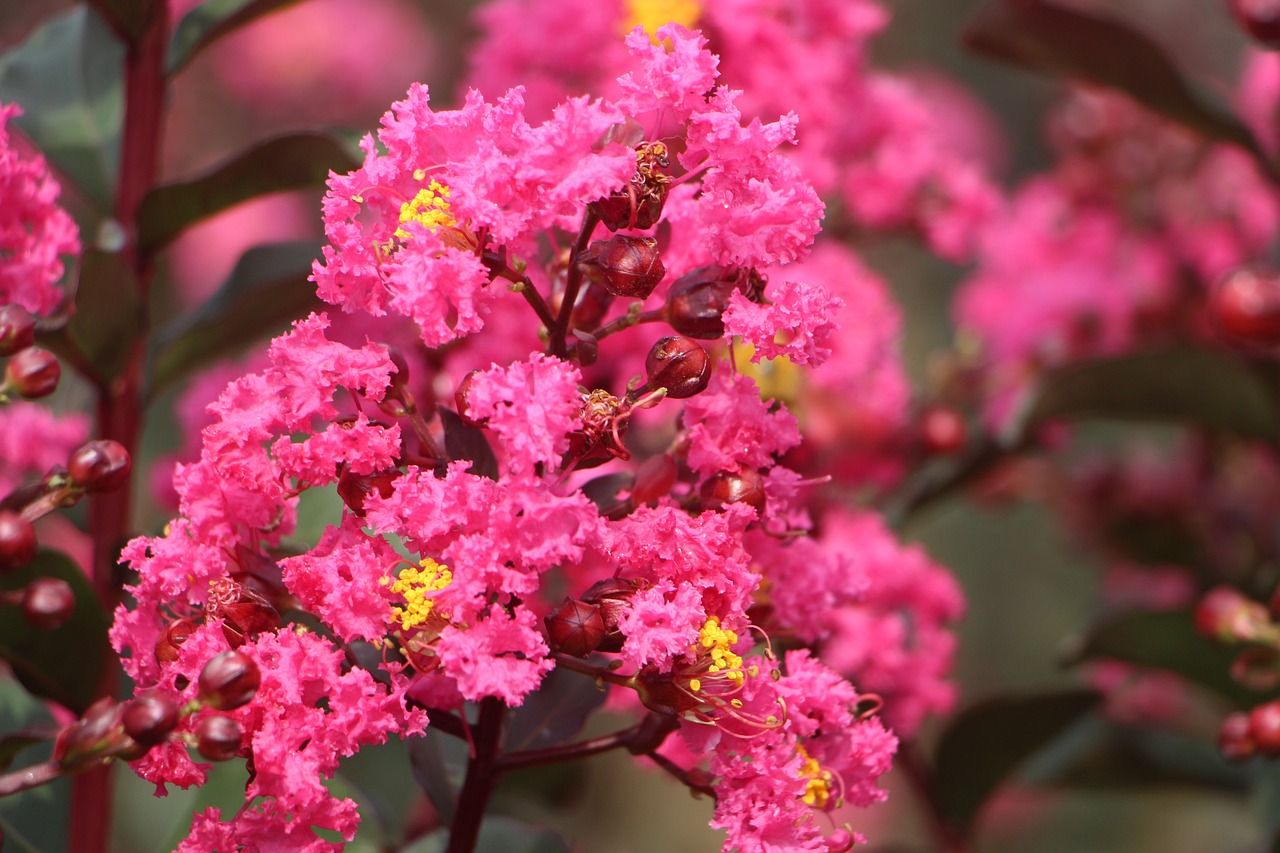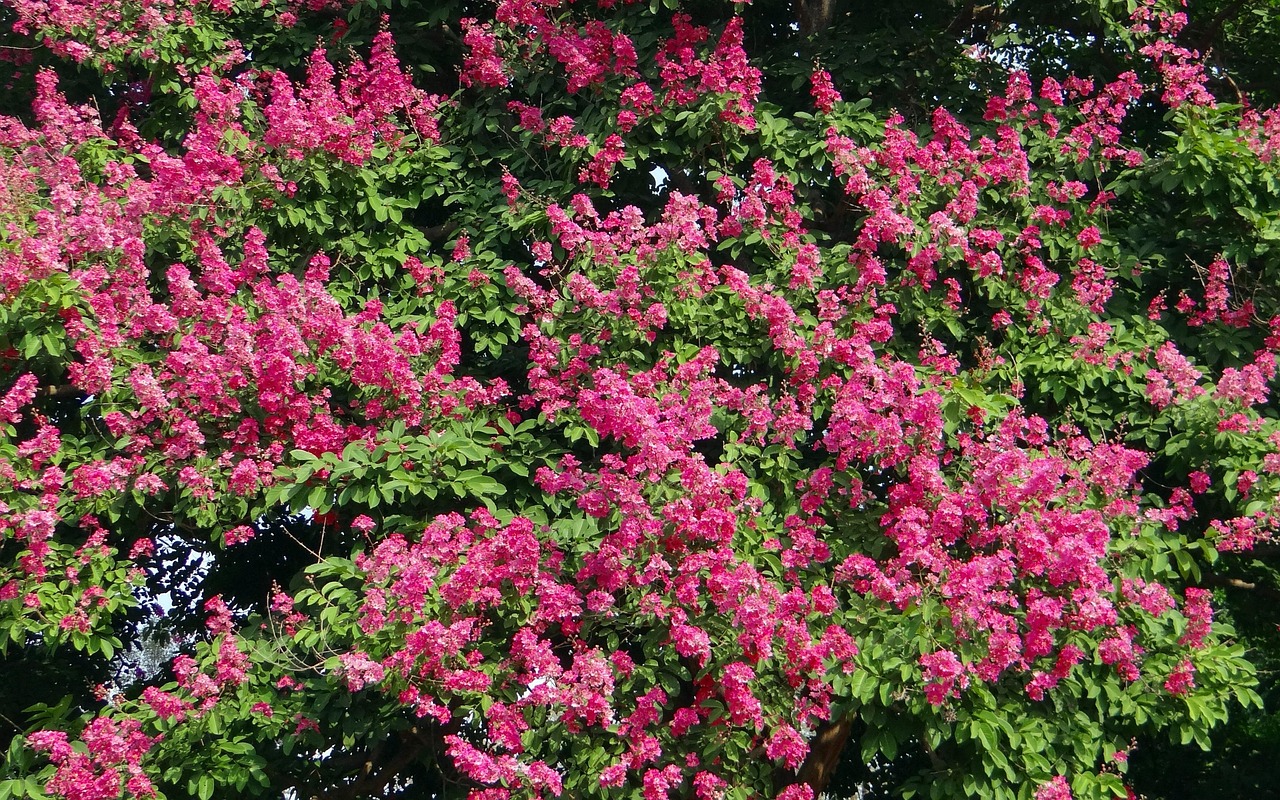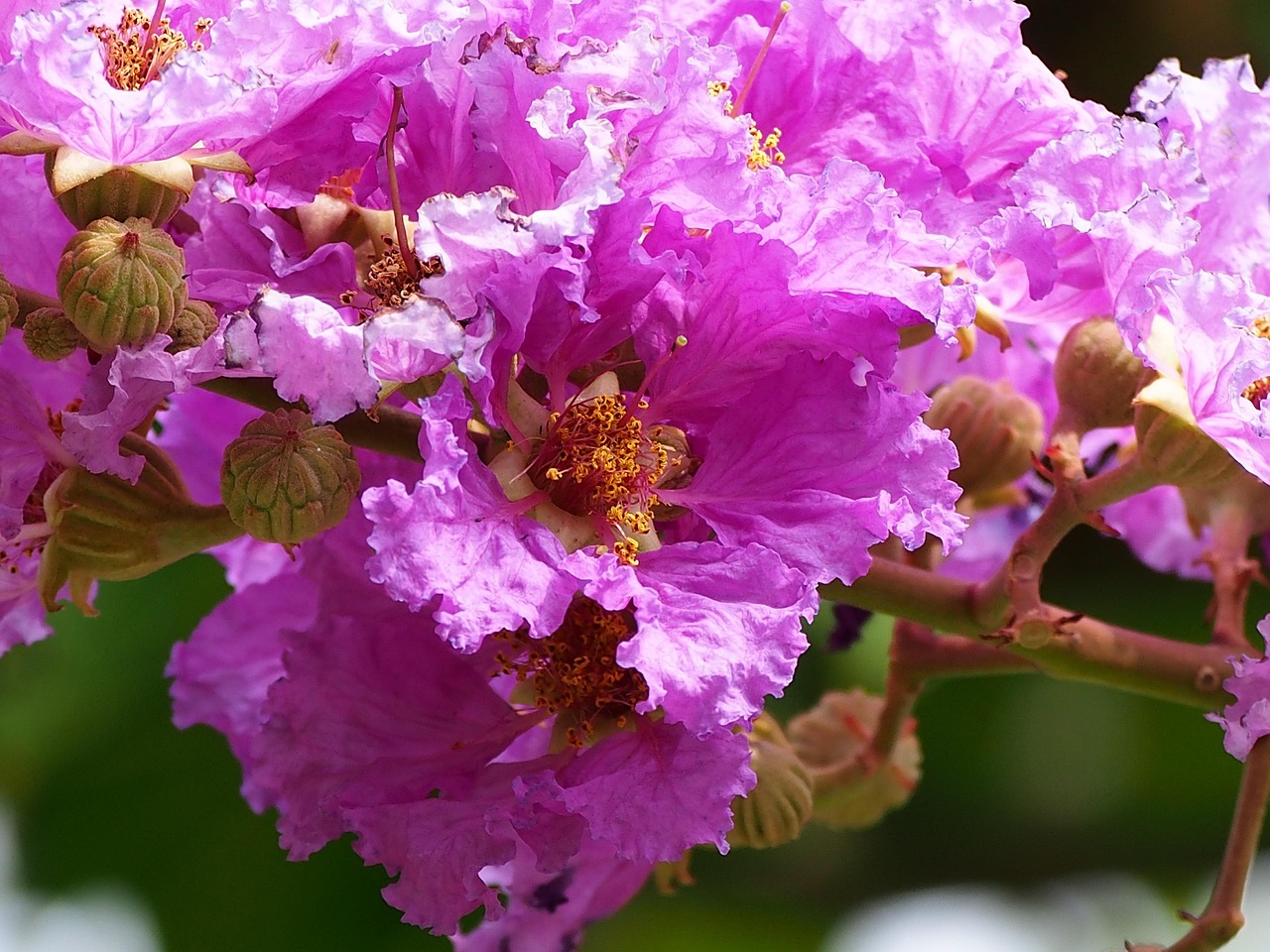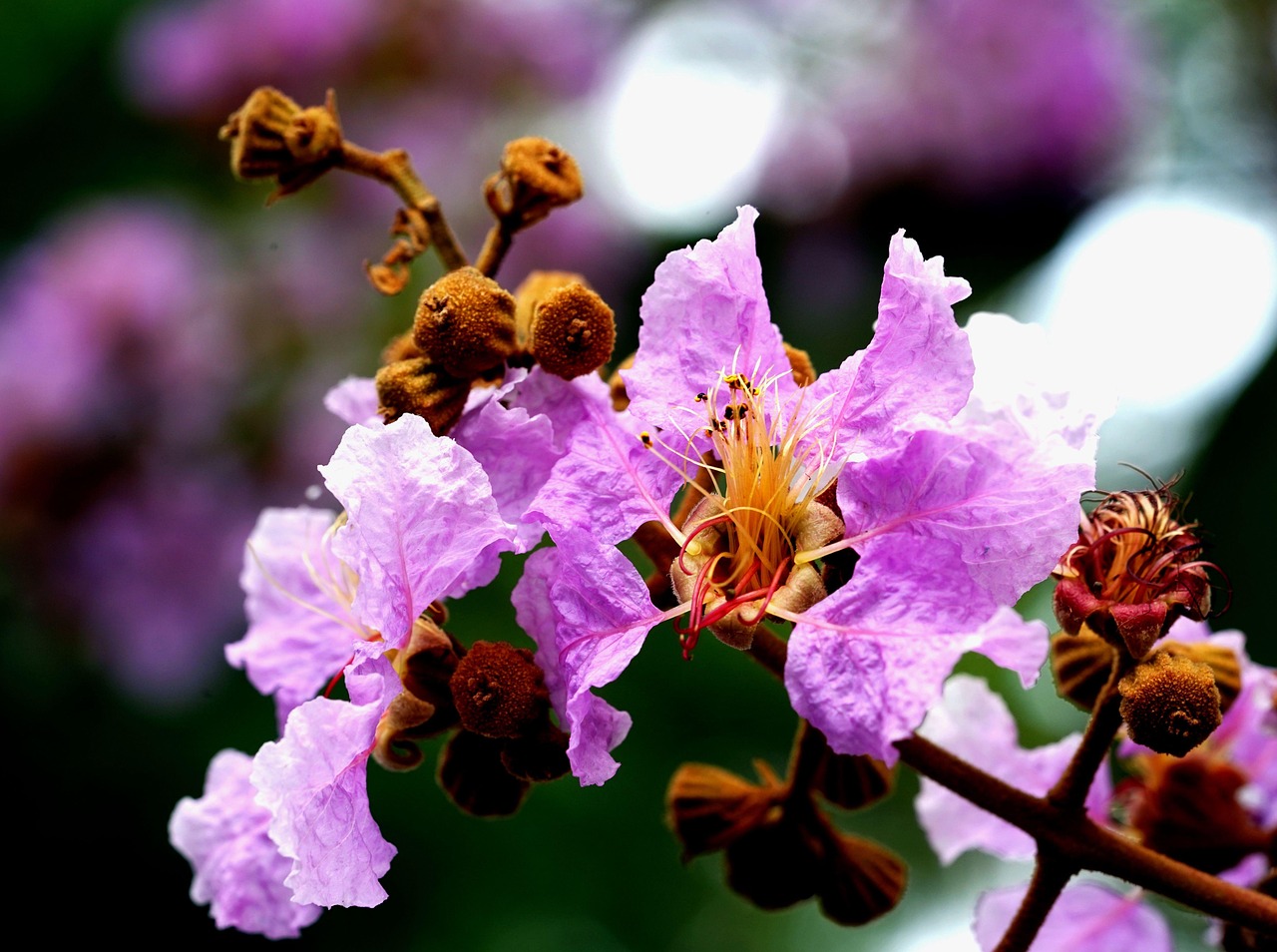Crape myrtle trees require careful pruning to promote healthy growth and vibrant blooms. New gardeners should prune these trees in late winter or early spring, focusing on removing dead or crossing branches and shaping the tree for better airflow and sunlight exposure.
Understanding Crape Myrtle Trees
Crape myrtle trees, known for their stunning summer blossoms and beautiful bark, are a popular choice among gardeners. They are native to Asia but have become widely cultivated in the United States. These trees can range from small shrubs to large trees, making them versatile for various landscape designs. Their colorful flowers bloom in shades of pink, red, white, and purple, adding beauty to any garden.

These deciduous trees are not only admired for their aesthetic appeal but also for their resilience and adaptability to different soil types. They thrive in full sun and are drought-resistant once established. However, to maintain their health and encourage prolific flowering, proper pruning is essential.
Benefits of Pruning Crape Myrtle Trees
Pruning serves several important purposes for crape myrtle trees:
- Promotes Health: Removing dead or diseased branches helps prevent pests and diseases from spreading.
- Encourages Blooms: Pruning encourages the production of new growth, which results in more flowers.
- Improves Structure: Shaping the tree enhances its overall structure, allowing for improved airflow and sunlight penetration.
- Controls Size: Regular pruning helps manage the size of the tree, making it suitable for smaller gardens.
When to Prune Crape Myrtle Trees
Timing is crucial when it comes to pruning crape myrtle trees. The best time to prune is in late winter or early spring, just before new growth begins. This timing allows gardeners to assess the tree’s structure while it is still dormant. Pruning too late in the spring can remove flower buds, reducing bloom production for that season.

It is essential to avoid pruning in the fall. Doing so can stimulate new growth that will not have time to harden off before winter, making the tree vulnerable to cold damage. Understanding the seasonal growth cycle of crape myrtles is key to effective pruning.
Essential Pruning Tools
Before starting the pruning process, having the right tools is essential for clean cuts and overall safety. Here are some necessary tools for pruning crape myrtle trees:
- Bypass Pruners: Ideal for smaller branches, providing clean cuts that promote healing.
- Loppers: Useful for cutting larger branches while providing leverage and reach.
- Saw: A pruning saw is necessary for thick branches that cannot be cut with pruners or loppers.
- Gloves: Protect hands from cuts and scrapes while working.
- Safety Glasses: Prevent debris from getting into the eyes during pruning.
Pruning Techniques for Crape Myrtle Trees
Understanding proper techniques is crucial for effective pruning. Here are some essential techniques that new gardeners should know:

1. Remove Dead or Diseased Wood
The first step in pruning is to identify and remove any dead or diseased branches. Look for branches that appear brown or brittle. Cut these back to healthy tissue, ensuring that your cuts are clean and angled slightly downward to promote water runoff.
2. Thin Out Crowded Branches
If branches are crossing or crowding each other, select the healthiest ones to keep. Remove any branches that interfere with each other’s growth. This thinning helps improve air circulation and sunlight exposure within the canopy.
3. Shape the Tree
Shaping involves trimming back longer branches to create a balanced look. Aim for a natural shape that enhances the tree’s appearance while maintaining its health. Avoid excessive shaping, as this can stress the tree.

4. Height Control
If your crape myrtle has grown taller than desired, you can reduce its height by cutting back the tallest stems. Make sure to prune just above a node (the point where leaves grow) to encourage new growth at that point.
Common Mistakes to Avoid
New gardeners often make several common mistakes when pruning crape myrtle trees:
- Pruning Too Late: As mentioned earlier, late spring pruning can remove flower buds.
- Over-Pruning: Excessive cuts can lead to stress and reduced blooming.
- Poor Cuts: Using dull tools can create jagged cuts that slow healing.
- Neglecting Maintenance: Regular maintenance is key; avoid waiting too long between prunings.
By following these guidelines and understanding the needs of crape myrtle trees, new gardeners can ensure their plants remain healthy and vibrant throughout the growing season.
Understanding the Growth Cycle of Crape Myrtle Trees
To effectively prune crape myrtle trees, it’s essential to understand their growth cycle. Knowing when the tree grows and when it is dormant can significantly influence pruning decisions. Crape myrtles typically go through several stages throughout the year, each requiring different care and attention.
The Dormant Stage
The dormancy period for crape myrtle trees usually occurs in late fall and winter. During this time, the tree conserves energy and prepares for the next growth cycle. This is the ideal time for pruning, as the absence of leaves means it’s easier to see the structure of the tree.
The Budding Stage
As winter comes to an end and temperatures begin to rise, crape myrtles enter the budding stage in early spring. This is when new growth starts to appear, and buds begin to swell. Pruning during this time can stimulate new growth and flowering.
The Blooming Stage
In late spring to summer, crape myrtle trees produce their vibrant flowers. This period typically lasts for several weeks, depending on the variety. During this time, minimal pruning is recommended, as it can interfere with floral development.
The Fall Stage
As summer ends and fall approaches, the flowers fade, and the leaves may change color before dropping. This stage is primarily focused on preparing for winter, and pruning should be avoided to allow the tree to focus on storing energy.
Techniques for Pruning Crape Myrtle Trees
Once you understand the growth cycle, applying proper pruning techniques will help maintain your tree’s health and appearance. Here are some effective pruning techniques specifically tailored for crape myrtle trees:
1. Heading Cuts
Heading cuts involve cutting back a branch to a bud or another branch. This technique is often used to control the height of the tree and promote new growth. When making heading cuts, ensure you cut above a healthy bud to encourage new shoots.
2. Thinning Cuts
Thinning cuts remove entire branches back to their point of origin. This technique helps reduce crowding within the tree’s canopy, allowing more sunlight to reach inner branches. Thinning also promotes better air circulation, reducing the risk of diseases.
3. Pinching
Pinching is a technique that involves removing the tips of young shoots. This method encourages bushy growth and can be particularly useful for younger trees. By pinching back new growth, you can create a fuller appearance without compromising health.
Seasonal Maintenance After Pruning
After pruning your crape myrtle tree, it’s crucial to follow up with seasonal maintenance to ensure its ongoing health. Here are some key maintenance tasks:
Watering
Following pruning, ensure your crape myrtle receives adequate water. Water deeply but infrequently to encourage strong root growth. During dry spells, monitor soil moisture and adjust watering as necessary.
Fertilization
Applying fertilizer in early spring can support new growth. Use a balanced fertilizer designed for flowering trees. Be cautious not to over-fertilize, as this can lead to excessive foliage at the expense of flowers.
Pest Management
Crape myrtles can be susceptible to pests like aphids and powdery mildew. Regularly inspect your trees for signs of infestation. If pests are present, consider using insecticidal soap or neem oil as organic solutions.
Choosing the Right Crape Myrtle Variety
Different varieties of crape myrtle exist, each with unique characteristics such as size, color, and growth habit. When selecting a variety for your garden, consider the following:
| Variety | Height | Flower Color | Bloom Time |
|---|---|---|---|
| Crape Myrtle ‘Natchez’ | 20-30 feet | White | Summer |
| Crape Myrtle ‘Muskogee’ | 15-25 feet | Lavender | Summer |
| Crape Myrtle ‘Tuscarora’ | 15-25 feet | Coral Pink | Summer |
| Crape Myrtle ‘Acoma’ | 10-15 feet | White | Summer |
Select a variety that fits your landscape needs and climate conditions. Some varieties are better suited for smaller spaces, while others thrive as larger specimens in open areas.
Preparing for Winter Care
As winter approaches, preparing your crape myrtle for colder temperatures is vital. Although crape myrtles are relatively hardy, steps should be taken to protect them from extreme weather conditions.
Bark Protection
The bark of young crape myrtles is susceptible to damage from frost and sunscald. Wrapping the lower trunk with burlap or a protective covering can safeguard against these conditions.
Mulching
A layer of mulch around the base of the tree can help insulate roots and retain soil moisture throughout winter. Use organic mulch like wood chips or shredded leaves, ensuring you keep it away from the trunk to prevent rot.
Caring for your crape myrtle through proper pruning and seasonal maintenance ensures that it thrives in your garden for years to come.
Pruning Challenges and Solutions
While pruning crape myrtle trees can be rewarding, it can also present certain challenges, especially for new gardeners. Understanding these challenges and how to address them will help ensure successful pruning outcomes.
Identifying Plant Health Issues
One of the first challenges may be identifying health issues before pruning. Signs of disease or pest infestation can sometimes be mistaken for normal growth. Here are some common issues to watch for:
- Powdery Mildew: A fungal disease that appears as white powder on leaves, often in humid conditions.
- Aphids: Small insects that cluster on new growth, causing distortion and wilting.
- Leaf Spot: Brown or black spots on leaves indicating a possible fungal infection.
If you notice any of these signs, it’s important to address them before proceeding with pruning. Treating the problem can help ensure healthier growth post-pruning.
Timing Challenges
Another challenge that gardeners face is timing their pruning correctly. As mentioned previously, late winter or early spring is ideal for pruning crape myrtles. However, weather conditions can vary significantly. Here are some tips for dealing with timing issues:
- Monitor Weather Conditions: If a warm spell occurs in late winter, don’t be tempted to prune early. Wait until the risk of frost has passed.
- Use Bud Development as a Guide: Look for signs of budding on branches before pruning, as this indicates that new growth is about to begin.
- Plan for Unexpected Weather: If you experience late frosts, be prepared to adjust your pruning schedule accordingly.
Advanced Pruning Techniques
As gardeners become more confident, they may want to explore advanced pruning techniques that can enhance the beauty and health of their crape myrtles. Here are a few methods to consider:
Espalier Technique
Espalier involves training a tree to grow flat against a wall or fence. This technique is ideal for limited spaces and creates a stunning visual effect. It requires regular pruning to maintain the desired shape:
- Select a healthy tree and choose a support structure.
- Begin training branches horizontally by securing them to the support.
- Prune vertical growth regularly to maintain the flat shape.
Coppicing
Coppicing is an aggressive pruning method where the tree is cut back to ground level during its dormant season. This technique encourages new growth and can be beneficial for rejuvenating older trees. Here’s how to do it:
- Choose a healthy crape myrtle that has become overgrown.
- In late winter, cut the tree back to about 12-18 inches above the ground.
- Expect vigorous new growth in spring; thin this growth as needed throughout the season.
Specific Varietal Considerations
Different varieties of crape myrtles may require specific pruning approaches based on their growth habits and size. Understanding these differences can lead to better care:
| Variety | Growth Habit | Pruning Needs |
|---|---|---|
| ‘Dynamite’ | Tall and upright | Minimal pruning; focus on deadwood removal |
| ‘Zuni’ | Dwarf variety | Light shaping; avoid heavy cuts to maintain compact form |
| ‘Acoma’ | Bushy and rounded | Regular thinning to promote airflow and blooms |
| ‘Natchez’ | Large and spreading | Significant shaping needed; remove older branches for rejuvenation |
Post-Pruning Care and Observation
After pruning, ongoing care is essential for recovery and growth. Here are some post-pruning care tips:
Watering Practices
Following pruning, trees may experience some stress. To mitigate this:
- Ensure consistent watering, aiming for deep but infrequent hydration.
- Avoid allowing the soil to dry out completely, especially during hot weather.
- Monitor the tree closely for signs of wilting or stress.
Nutrient Management
Nutrients play a vital role in recovery after pruning. Consider these strategies:
- Soil Testing: Conduct a soil test to determine nutrient levels and pH. This will help guide fertilization decisions.
- Organic Fertilizers: Opt for slow-release organic fertilizers to provide consistent nutrient availability over time.
- Avoid Over-Fertilization: Too much fertilizer can lead to excessive foliage growth with fewer blooms.
Pest Monitoring
After pruning, keep an eye out for pests that may invade weakened branches. Regularly inspect leaves and stems for any unusual signs:
- Look for sticky residue, which may indicate aphid presence.
- Check for webbing or visible insects on new growth.
- If pests are detected, treat them immediately using appropriate methods.
This comprehensive approach ensures that crape myrtle trees not only recover well from pruning but also thrive in your garden environment.
Additional Tips for Crape Myrtle Care
In addition to the pruning techniques and seasonal care outlined in the previous sections, there are other important considerations that can enhance the overall health and beauty of your crape myrtle trees. These tips will help ensure that your trees remain vibrant and resilient throughout the year.
Choosing the Right Location
The location where you plant your crape myrtle can significantly affect its growth and flowering capabilities. Here are some recommendations:
- Sunlight: Crape myrtles thrive best in full sun. Ensure that the selected site receives at least six hours of direct sunlight daily for optimal blooming.
- Soil Type: Well-draining soil is crucial. Crape myrtles prefer loamy or sandy soils. If your soil retains too much moisture, consider amending it with organic matter to improve drainage.
- Space for Growth: Provide enough space for the tree to grow, considering its mature size. Avoid planting too close to buildings or other trees to prevent competition for resources.
Companion Planting
When planning your garden, consider companion planting with crape myrtles. Some plants can enhance the aesthetic and health of your crape myrtle while providing benefits such as pest control or improved soil health:
- Lavender: This fragrant herb can repel pests and attract pollinators.
- Daylilies: Their colorful blooms complement crape myrtles and can thrive in similar soil conditions.
- Coreopsis: These bright flowers attract beneficial insects and enhance the garden’s visual appeal.
Seasonal Observations
Beyond regular maintenance, seasonal observations can help you catch any issues early. During each season, take the time to assess your crape myrtle:
- Spring: Look for new growth and blooms. Check for signs of disease or pests as the weather warms up.
- Summer: Monitor water needs, especially during hot spells, and ensure proper hydration.
- Fall: Inspect foliage color changes and prepare for winter by assessing any necessary protective measures.
- Winter: Evaluate the tree’s structure after leaf drop to plan for the next pruning cycle.
Using Mulch Wisely
Mulching around your crape myrtle can provide several benefits. Here are some best practices:
- Type of Mulch: Use organic mulches such as shredded bark or wood chips. These materials break down over time, enriching the soil.
- Depth: Apply a layer of mulch about 2-3 inches thick. This will help retain moisture and suppress weeds without suffocating the roots.
- Avoid Mulch Volcanoes: Do not pile mulch against the trunk of the tree; this can lead to rot and other issues. Keep mulch a few inches away from the base.
Final Thoughts
Crape myrtle trees are a delightful addition to any garden, offering stunning blooms and beautiful bark throughout their growing seasons. By understanding their growth cycle, employing proper pruning techniques, and providing consistent care, new gardeners can cultivate these trees successfully. Remember to monitor their health, select suitable planting locations, and maintain good soil practices.
The journey of caring for crape myrtles may seem daunting at first, but with patience and practice, you will see the rewards in vibrant blooms and healthy growth year after year. Embrace the learning process, seek advice from fellow gardeners, and enjoy the beauty that crape myrtles can bring to your landscape.
In summary, focus on timing your pruning correctly, using appropriate techniques, and following up with post-pruning care. By doing so, you will not only help your crape myrtle trees flourish but also enhance your skills as a gardener. Happy gardening!
